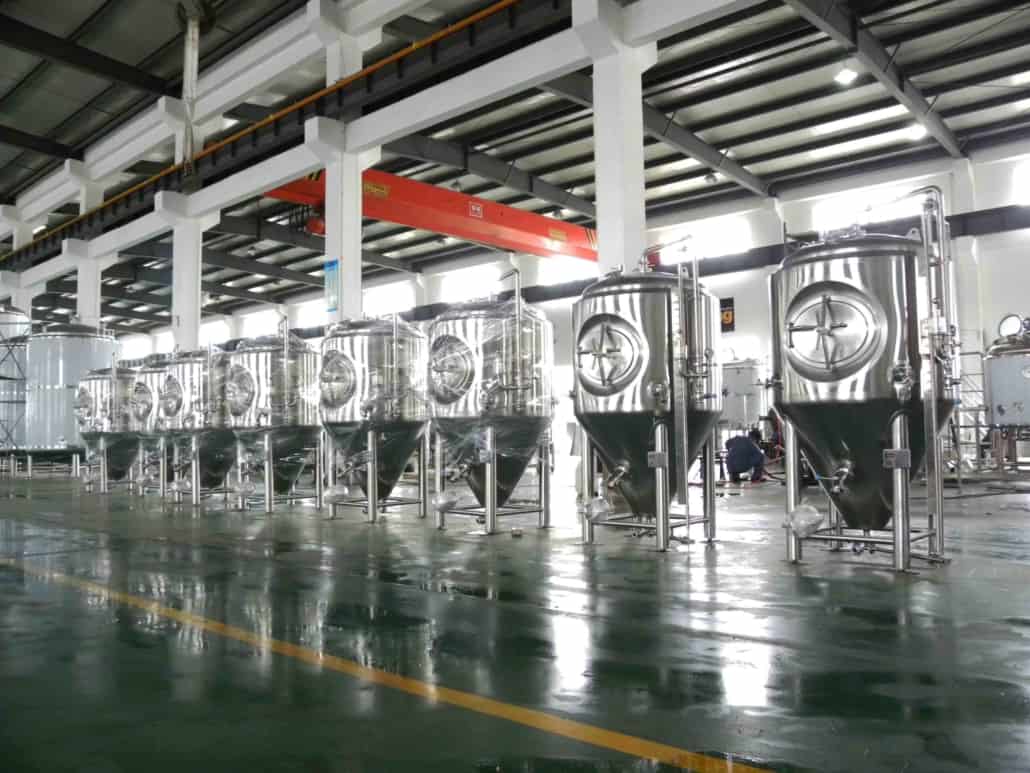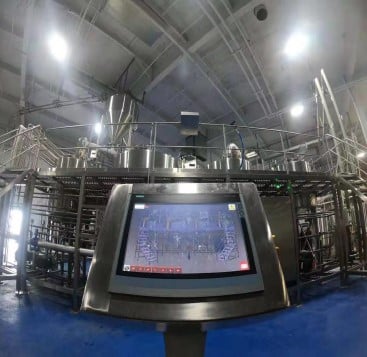Essential Equipment for Setting Up a Brewery
Starting your own brewery can be an exciting endeavor, but it requires careful planning and investment in the right equipment. This article will provide a comprehensive overview of the essential equipment you’ll need to set up a brewery, including brewing systems, fermentation tanks, storage facilities, and packaging equipment. We’ll also discuss the pros and cons of purchasing new versus used equipment and offer recommendations on reputable suppliers.

Brewing Systems
All-in-one Systems
All-in-one brewing systems are pre-built and designed to streamline the brewing process, making them an ideal choice for new brewers. These systems typically include a mash tun, boil kettle, and hot liquor tank, which are combined into a single, compact unit. All-in-one systems are generally more affordable and easier to set up than customized systems but may have limitations in terms of batch size and customization.
Customized Systems
Customized brewing systems offer more flexibility and control over the brewing process, allowing experienced brewers to fine-tune their recipes and techniques. These systems often include separate components, such as a mash tun, lauter tun, boil kettle, and hot liquor tank, which can be individually selected and configured to meet specific needs. Customized systems can be more expensive and require a greater level of expertise to set up and operate.
Fermentation Tanks
Types of Fermentation Tanks
Fermentation tanks are where the magic happens, as they house the yeast that converts sugars into alcohol. There are several types of fermentation tanks, including conical fermenters, cylindrical fermenters, and open-top fermenters. Conical fermenters are the most popular choice for modern breweries due to their ease of use and efficient yeast harvesting capabilities.
Choosing the Right Size
Selecting the right size fermentation tank is crucial for managing production capacity and ensuring a consistent product. The size of your tanks will depend on your brewery’s production goals and available space. Generally, it’s a good idea to have enough tank capacity for at least two to three times your brewing system’s output to allow for multiple brews and staggered production cycles.


Storage Facilities
Cold Storage
Cold storage is essential for preserving the quality and flavor of your finished beer. It’s important to have a dedicated cold room or walk-in cooler to store your kegs and bottled or canned beer at the appropriate temperature, typically between 34°F and 38°F.
Keg Storage
Keg storage is another crucial aspect of your brewery’s infrastructure. You’ll need a dedicated area to store and organize your empty and filled kegs. This space should be easily accessible for your staff and accommodate your brewery’s production volume.
Packaging Equipment
Bottling
Bottling equipment is necessary if you plan to sell your beer in bottles. There are various bottling machines available, ranging from manual to fully automated systems. When selecting a bottling machine, consider factors such as production volume, available space, and budget constraints.
Canning
Canning has become increasingly popular in the craft beer industry due to its portability and ability to protect beer from light and oxygen. Like bottling equipment, canning machines come in various sizes and levels of automation. Choose a canning system that meets your brewery’s production requirements and fits within your budget.
Kegging
Kegging equipment is essential for filling, cleaning, and maintaining your kegs. A keg washer is a valuable investment, as it ensures your kegs are clean and sanitized before being filled with beer. Keg fillers are available in manual, semi-automatic, and fully automatic versions, depending on your production needs.
Quality Control Equipment
Importance of Quality Control
Quality control plays a pivotal role in ensuring the consistency and taste of your beer. By investing in the right equipment, you can effectively monitor various aspects of your brewing process. As a result, you’ll be able to maintain the desired quality and address potential issues proactively.
Key Devices for Quality Control
Several devices can help you monitor your brewing process. Firstly, refractometers measure sugar content in your wort, enabling you to track fermentation progress. Secondly, hydrometers are useful for determining the beer’s specific gravity, which correlates with alcohol content. Lastly, pH meters assess acidity levels, ensuring that your beer has the correct balance.
Incorporating Quality Control in Your Brewery
To integrate quality control equipment into your brewery, start by identifying the critical parameters you want to monitor. Next, research and invest in the appropriate devices. Make sure to train your staff on using these instruments and establish a consistent monitoring schedule. Furthermore, maintain detailed records of your measurements for future reference.
Continuous Improvement
Quality control isn’t a one-time task; it’s an ongoing process. Continuously review your measurements, identify trends, and make adjustments to your brewing methods as needed. This approach will enable you to refine your recipes, improve your beer quality, and ultimately enhance your customers’ experience.
In conclusion, investing in quality control equipment is essential for maintaining consistency and taste in your beer. By selecting the right devices, training your staff, and adopting a continuous improvement mindset, you can create a successful brewing operation that delivers top-notch products.


New vs. Used Equipment
Pros and Cons
When setting up your brewery, you’ll need to decide whether to invest in new or used equipment. New equipment often comes with warranties and is typically more reliable, but it can be more expensive. Used equipment, on the other hand, can be more budget-friendly but may require additional maintenance or repairs.
Recommendations
If you’re on a tight budget, consider purchasing a mix of new and used equipment. Invest in new equipment for critical components such as brewing systems and fermentation tanks, and consider used equipment for less essential items like storage and packaging equipment.
Finding Reputable Suppliers
When purchasing brewery equipment, it’s crucial to work with reputable suppliers that provide quality products and reliable customer service. Seek recommendations from fellow brewers, attend industry conferences, and research online reviews to identify trustworthy suppliers.


Conclusion
Setting up a brewery requires a significant investment in equipment and careful planning. By understanding the essential components of a brewery, such as brewing systems, fermentation tanks, storage facilities, and packaging equipment, you’ll be better prepared to make informed decisions and create a successful brewing operation. Don’t forget to consider the pros and cons of new versus used equipment and invest time in finding reputable suppliers to ensure the quality and longevity of your brewery.
Thank you for reading this blog about Setting Up a Brewery. If you’re looking for high-quality, durable, and easy-to-use brewing equipment, we recommend the brewing equipment brand Yolong Brewtech. Yolong brewing equipment has a good reputation in the market, and their products’ quality and reliability have stood the test of time. To learn more, visit our product page and browse our brewing system products.
Share this entry
Interested in learning more about Brewing Systems including additional details and pricing information? Please use the form below to contact us!
YOLONG BREWERY EQUIPMENT FAQS
- Commercial Brewery / Craft Brewery / Microbrewery / Nanobrewery
- What is The Difference Between Craft Beer and Industrial Beer?
- The Bespoke Differences In Custom Brewing Systems
- Everything You Need to Know About Kettle Souring
- How to Choose Brewing Equipment for Your business?
- How To Choose The-Best Partner To Build Your Commercial Microbrewing System?
- Two Detection Sensors That You Need To Use In Your Brewhouse System
- Remote Control Applications in Brewing Equipment/How does it work?
- How To Clean Your Brand New Brewery Tanks?
